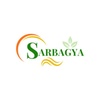In today's world, where the emphasis on healthy living and sustainability is growing, the demand for quality agricultural products is on the rise. Whether you're a consumer looking for the best produce or a retailer seeking top-notch items to stock your shelves, being able to identify quality agricultural products is essential. But with so many options available, how can you distinguish the superior from the mediocre? Here are some key factors to consider when evaluating agricultural products for quality.
-
Appearance: The appearance of agricultural products can often provide valuable clues about their quality. Fresh fruits and vegetables should have vibrant colours, and firm textures, and be free from blemishes or bruises. Similarly, grains and legumes should be uniform in size, shape, and colour. Any signs of wilting, discolouration, or damage may indicate poor quality.
-
Texture and Consistency: When it comes to evaluating agricultural products such as seeds, grains, meats, or dairy, texture and consistency play a crucial role. Grains should be whole, intact, and free from foreign matter. Meats should be firm and well-marbled, while dairy products should have a smooth and creamy texture. Any abnormalities in texture or consistency could signify improper handling or processing.
-
Scent: A product's aroma can often reveal a lot about its freshness and quality. Fresh fruits and vegetables should have a pleasant, characteristic smell that reflects their variety. Meats and dairy should have a clean, neutral scent, indicating proper storage and handling. Any off-putting odours may indicate spoilage or contamination.
-
Certifications and Labels: Look for certifications and labels that indicate the product meets certain quality standards or has been produced using sustainable and ethical practices. Common certifications include USDA Organic, Fair Trade, Non-GMO Project Verified, and Certified Humane. These labels provide assurance that the product has been produced according to specific guidelines and undergoes regular inspections.
-
Packaging: Pay attention to the packaging of agricultural products, especially processed or packaged goods. Quality packaging should be intact, clean, and free from damage. It should also provide adequate protection against contamination, moisture, and pests. Additionally, check for any expiration dates or storage instructions to ensure freshness and safety.
-
Origin and Traceability: Knowing the origin of agricultural products and their journey from farm to table can provide valuable insights into their quality and safety. Look for products that come from reputable sources with transparent supply chains. Traceability ensures accountability and allows consumers to make informed decisions about their purchases.
-
Taste: Ultimately, taste is one of the most important factors when determining the quality of agricultural products. Whether it's the sweetness of a ripe berry or the richness of a grass-fed steak, the taste should be fresh, flavorful, and true to its natural characteristics. Always sample products whenever possible to ensure they meet your expectations.
By considering these factors, consumers and retailers alike can confidently identify and select high-quality agricultural products that not only taste great but also support sustainable farming practices and promote overall well-being. From farm-fresh produce to ethically sourced meats and dairy, choosing quality agricultural products is a simple yet powerful way to nourish both body and soul.


No comments yet